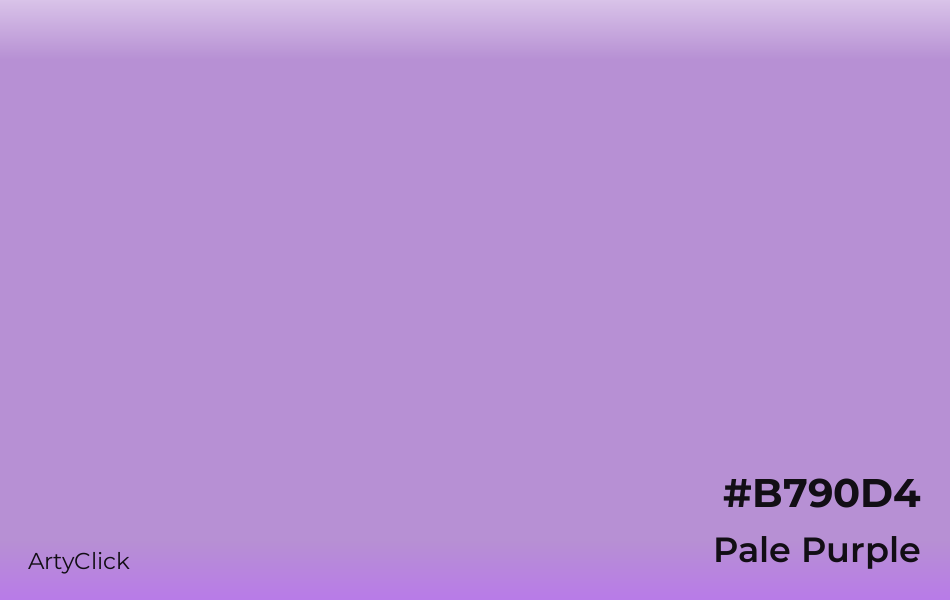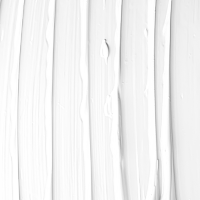Pale Purple
#B790D4

Shades of Pale Purple
Tints of Pale Purple
Tones of Pale Purple
What color is Pale Purple
Pale Purple is a light pastel shade of Purple. It belongs to the color family Pastel Purple, and it has high lightness and low saturation. Pale Purple is a pastel color. Pale Purple is a cool color.
What are the HEX, RGB, HSV, HSL and CMYK color codes of Pale Purple
RGB space
CMYK space
The hex code for Pale Purple is #B790D4.
In the RGB (Red, Green, Blue) color space, which is used for digital colors, Pale Purple has 72%% Red, 56% Green, and 83% Blue.
Pale Purple has 274° Hue, 32% Saturation, and 83% Value in the HSV (Hue, Saturation, Value) color space, which is another way to represent digital colors.
Pale Purple has 274° Hue, 44% Saturation, and 70% Lightness in the HSL (Hue, Saturation, Lightness) color space, which is a different way to express digital colors.
Pale Purple has 14% cyan, 32% magenta, 0% yellow, and 17% black in the CMYK (Cyan, Magenta, Yellow, Black) color space, which is used for color printing.
Color Space |
Original Units |
Percentage |
|---|---|---|
Hex |
#B790D4 |
|
RGB |
(183, 144, 212) |
(72%, 56%, 83%) |
HSV |
(274°, 32, 83) |
(76%, 32%, 83%) |
HSL |
(274°, 44, 70) |
(76%, 44%, 70%) |
CMYK |
(14, 32, 0, 17) |
(14%, 32%, 0%, 17%) |
How does Pale Purple contrast with black and white
The natural luminance of Pale Purple is 35%, which is medium high.
Pale Purple has a higher contrast with black than white.
Pale Purple and black have a 8.0:1 contrast ratio, which meets the AAA requirement. These colors are suitable for text.
Pale Purple and white have a 2.6:1 contrast ratio, which is insufficient for readability.
Luminance |
Contrast to Black |
Contrast to White |
|---|---|---|
35% |
AAA (8.0) |
insufficient (2.6) |
Example Black |
Example White |
Example Black |
Example White |
What colors go with Pale Purple
How to mix Pale Purple paint

To mix Pale Purple paint using eight primary colors (Red, Green, Blue, Cyan, Magenta, Yellow, White, and Black), you'll need to combine 16% Blue, 11% Magenta, 17% Black, 56% White, as shown below.

Yellow
0%

Red
0%

Green
0%

Blue
16%

Cyan
0%

Magenta
11%

Black
17%

White
56%
To mix Pale Purple paint using five primary colors (Cyan, Magenta, Yellow, White, and Black), you'll need to combine 8% Cyan, 19% Magenta, 17% Black, 56% White, as shown below.

Cyan
8%

Magenta
19%

Yellow
0%

Black
17%

White
56%
What colors are similar to Pale Purple
Colors similar to Pale Purple are: Bright Lavender, Lavender, Light Pastel Purple, Light Wisteria, and Wisteria. Bright Lavender is brighter and lighter than Pale Purple. Lavender is brighter and darker than Pale Purple. Light Pastel Purple is more blue and paler and lighter than Pale Purple. Light Wisteria is more magenta and paler and lighter than Pale Purple. Wisteria is more magenta and brighter and darker than Pale Purple.